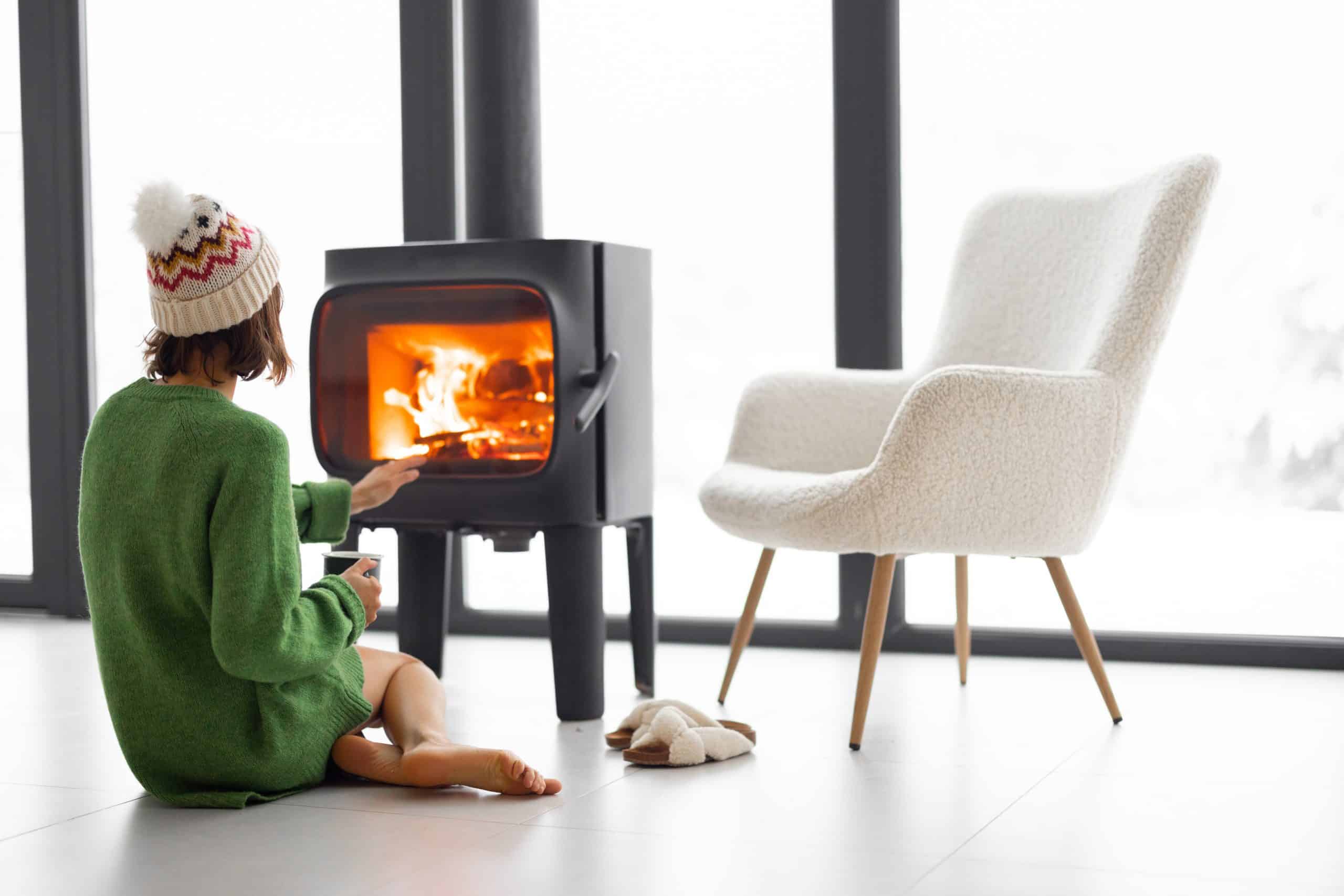What’s the Best Type of Fireplace for an Energy-Efficient Victorian Home Remodel?

When it comes to building a fireplace in your Victorian home, there are several considerations to keep in mind. The type of fireplace, the design, the source of heat, and the energy efficiency of the chosen model are all essential aspects. This article will explore the different alternatives available, focusing on their functionality and energy efficiency, to help you make a well-informed decision.
Choosing the Right Fireplace: What You Need to Consider
The choice of a fireplace for your home is not just about aesthetics or a desire to have a warm and cozy room during cold nights. It entails understanding the different types of fireplaces, what advantages they offer, and how well they fit into your design scheme. Not to mention, you also need to consider the energy efficiency of the fireplace to ensure it contributes to your home’s overall energy consumption without being a burden.
A lire en complément : How to Implement a Home Energy Monitoring System for Identifying Power Usage Trends?
When we speak of fireplaces, we mean a variety of appliances, each offering its unique benefits. The most common types include wood-burning, gas, and electric fireplaces. Each of these has its charms and drawbacks, which we will delve into in the following sections.
Wood-Burning Fireplaces: Traditional Charm with a Modern Twist
Wood-burning fireplaces are the traditional choice, particularly for Victorian homes. They create a fantastic atmosphere, burning wood to release heat and light up the room. The crackling sound, the smell of burning wood, and the visual appeal of a real fire make these fireplaces a favorite among homeowners looking to maintain the classic charm of their Victorian homes.
En parallèle : How to Incorporate Upcycled Furniture into a Vintage-Inspired Bedroom?
However, modern wood-burning fireplaces have gone beyond the traditional open design. They now come with glass doors and improved air control systems to reduce heat loss and enhance energy efficiency. The newest models even feature air-tight doors and outside air intake to maximize combustion and minimize the amount of heat that escapes up the chimney. This way, they can contribute to your home’s energy efficiency without sacrificing the traditional aesthetic.
Gas Fireplaces: Convenience and Efficiency
Gas fireplaces present an excellent alternative to wood-burning fireplaces, offering the convenience of an instant fire at the flip of a switch. They eliminate the need for wood, which means no more messy ashes to clean up or smoke that infiltrates your home. They also come in a variety of designs, allowing you to maintain the Victorian charm while enjoying modern functionality.
In terms of energy efficiency, gas fireplaces excel. They have a high heat output and offer an efficient heating source, with many models achieving up to 90% efficiency. This results from their closed combustion system, which minimizes heat loss by trapping the warm air inside your house. A gas fireplace can quickly warm up a room, making it a great option if you aim to reduce your home’s overall heating costs.
Electric Fireplaces: The Future of Home Heating
Electric fireplaces are the newest addition to the world of home heating. They operate by warming up internal coils using electricity, which then heats the air that is blown into the room by a fan. These fireplaces come in various designs, from traditional to modern, making them an ideal choice for any home, including Victorian houses.
In terms of energy efficiency, electric fireplaces stand out. They convert almost 100% of the electricity they consume into heat, leading to minimal energy wastage. These fireplaces do not require a chimney, eliminating the risk of heat loss through the chimney. The heat produced is also fan-assisted, ensuring even distribution throughout the room. Furthermore, they come with adjustable thermostats, allowing you to control the heat output and energy consumption effectively.
Picking the Right Fireplace: Balancing Energy Efficiency with Aesthetics
Choosing the best type of fireplace for your energy-efficient Victorian home remodel involves a careful balance between aesthetics and energy efficiency. It’s all about finding a fireplace that not only complements the design and style of your home but also contributes to the overall energy efficiency of your house.
Wood-burning fireplaces deliver an authentic feel, but their energy efficiency might not be as high as gas or electric alternatives. Gas fireplaces offer both convenience and efficiency, but they may not provide the traditional appeal you’re seeking. Electric fireplaces, on the other hand, offer the highest energy efficiency and flexibility in design but may lack the charm of a real fire.
Remember, it’s not just about energy efficiency or aesthetics. It’s about finding a balance that suits your needs and preferences. Whichever type of fireplace you choose, ensure it adds value, warmth, and charm to your Victorian home.
Fireplaces and Green Building: Making a Sustainable Choice
Choosing the right fireplace for your Victorian home remodel is more than just about the aesthetics or the heating efficiency. It also involves making sustainable choices for green building. The type of fireplace you opt for can have a significant impact on your home’s carbon footprint.
Wood-burning fireplaces, while traditional and charming, can contribute to environmental pollution. When wood burns, it releases particulates and other pollutants into the air. Additionally, if the wood used is not sourced sustainably, it can contribute to deforestation.
On the other hand, gas fireplaces have a lower environmental impact. They burn cleaner than wood, reducing the emission of harmful pollutants. Natural gas, the fuel used in most gas fireplaces, is a cleaner-burning fossil fuel compared to others. However, it’s important to note that it’s still a non-renewable resource.
Electric fireplaces are the cleanest option, especially if the electricity used to power them comes from renewable sources. They don’t produce combustion pollutants, and their high energy efficiency ensures minimal power wastage. However, the environmental impact of electric fireplaces also depends on the source of the electricity. If it’s generated from coal or other non-renewable fuels, the environmental impact could be higher.
Therefore, when choosing a fireplace, it’s vital to consider the green building aspect. Opt for a model that not only suits your living room design and heating needs but also aligns with your sustainability goals.
Preventing Creosote Buildup: A Key Consideration
Another crucial factor to consider when choosing a fireplace for your Victorian home is the potential for creosote buildup. Creosote is a byproduct of the incomplete combustion of wood, and it can accumulate in your chimney over time. This buildup can be a significant fire hazard, potentially leading to chimney fires if not regularly cleaned.
Wood-burning fireplaces and stoves are most prone to creosote buildup due to the nature of the fuel they use. Therefore, if you opt for a wood-burning fireplace, regular chimney cleaning and maintenance are essential to prevent creosote accumulation.
Gas fireplaces, on the other hand, have less potential for creosote buildup since they burn cleaner than wood. The lack of solid fuel means there is no ash or creosote to clean up, reducing maintenance needs.
Electric fireplaces are the easiest to maintain, as they do not involve combustion and, therefore, produce no creosote. They are an excellent choice if your primary concern is reducing maintenance tasks and potential fire hazards.
Conclusion: Making the Right Choice for Your Home
Deciding on the ideal fireplace for your Victorian home remodel requires careful consideration. It involves striking a balance between maintaining the traditional charm of a wood fireplace and the convenience, efficiency, and safety offered by gas and electric fireplaces. It also means considering the environmental impact of your choice and its compatibility with green building principles.
Wood-burning fireplaces offer the classic appeal of a real, crackling fire, but their energy efficiency may be lower, and they require more maintenance due to possible creosote buildup. Gas fireplaces offer a middle ground with better energy efficiency and less maintenance, while still providing a semblance of a traditional fireplace. Electric fireplaces, while lacking the feel of a real flame, offer the highest energy efficiency and the lowest maintenance needs.
Ultimately, the best type of fireplace is the one that suits your style, meets your heating needs, aligns with your sustainability goals, and fits within your budget. By understanding the pros and cons of each type, you can make an informed decision and choose a fireplace that truly enhances your living space.
